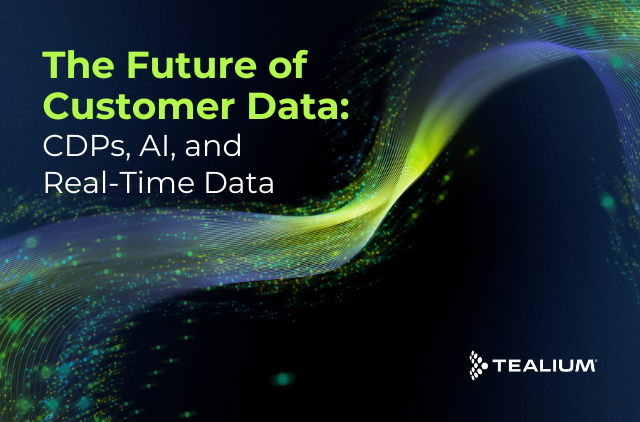When data professionals start their search in the quest to find the best customer data management tools for their company, some might agree the experience is kind of like that of an aggressive open flea market. How so? Vendors to the left offer up their solution as the one that will change the buyer’s world (or promise to make their skin glow), vendors to the right promise that theirs will fulfill all of their customer data hopes and dreams (or just be the best darn kale they’ve ever eaten).
So what are you to do to help separate the best from the rest? What’s important and what it isn’t when it comes to key CDP capabilities? Is being data-driven really that important like everyone says? Can one customer data management solution truly do it all? And will that kale really be the best they’ve ever eaten? (It won’t.)
We’re here to help make the process of evaluating and choosing customer data technology easier.
4 Customer Data Guiding Principles You Can’t Live Without
#1: Focus on Data Integrity
I know what you’re thinking, data can’t have integrity, right? Wrong! Shouldn’t it also be quality, good-natured and trusted just like a person? Your customer data is going to be the lifeblood running through the veins of your customer data supply chain, so you’ll want it to be top notch.
Data integrity, which is really the combination of data quality and governability, brings together both the concerns, and need, for having data that’s usable, protected and auditable. Share on X
And this same sentiment goes towards the vendors you’ll be partnering alongside and integrating with in your tech stack. They should be trusted, transparent and have clarity around where data is flowing and going.
The old adage still rings true, even with data: treat others how you want to be treated. If you have good values around your data and treat it well, your data will give you good (if not better) results back.
#2: Think Cross-Departmentally
Consumers jump around between channels quickly when they’re interacting with the brands they love – could be by making a comment on the brand’s Instagram, making a purchase off the website or clicking on an ad that touts a hefty discount. The consumer’s journey isn’t linear, so the experience the brand is providing shouldn’t be either.
As brands collect the multi-channel data their audience is giving them, they need to have internal teams thinking and acting in the same, multi-channel, multi-departmental way. Including people from teams like customer experience, marketing, operations, IT, analytics, legal and more around customer data initiatives will ensure not only technological silos are removed in the data collecting and housing process, but cultural silos are removed too.
#3: Value Vendor-Neutrality
Brands today may very well have more than 100+ different technologies in their martech stack that they’re using to fuel their customers’ experiences. When evaluating which CDP to use, it’s imperative that the one of choice is vendor-neutral so there’s a seamless integration between the other tools in the stack.
Valuing vendor-neutrality can help reduce any frustration and costs of having to re-implement new tools and point solutions. It can also remove the need to restructure internal systems and processes as well as restaff any internal experts on the tool at hand.
By using a vendor-neutral customer data management technology you will also ensure you’re taking a best-of-breed approach to your tools.
#4: Demand True Real-Time Capabilities
Consumers aren’t demanding real-time moments from the brands they engage with, they’re expecting it. Along with personalization, creating content that speaks to them and having very timely moments of interaction, it’s no small feat for brands to get the customer experience right, not just the first time, but every time.
If an organization’s data supply chain isn’t built on a real-time data foundation, providing experiences that exceed customers’ expectations just isn’t possible.
When a customer is ready to act, your data needs to be ready to respond, rather than sitting on the sidelines (or in a siloed system), being delayed in action.
Providing the best customer experience possible isn’t going to get easier anytime soon; in fact, it’s going to get harder as innovative new technologies come to market and data privacy laws become more difficult to comply with.
***
We hope that by keeping these 4 customer data technology guiding principles at the forefront of your business initiatives it will make the process of evaluating and choosing a customer data technology just a little bit easier.
Want to learn more about how to build a foundation for a data-driven customer experience future? Download our latest Newsletter featuring a Gartner Research Note and learn how to:
- Discover the principles behind pairing customer data management with customer experience initiatives
- Learn what a 360-degree view of the customer means for your company
- Understand the customer data management landscape

Learn how to align your Customer Data Management technology with your Customer Experience strategies!
Download Now






